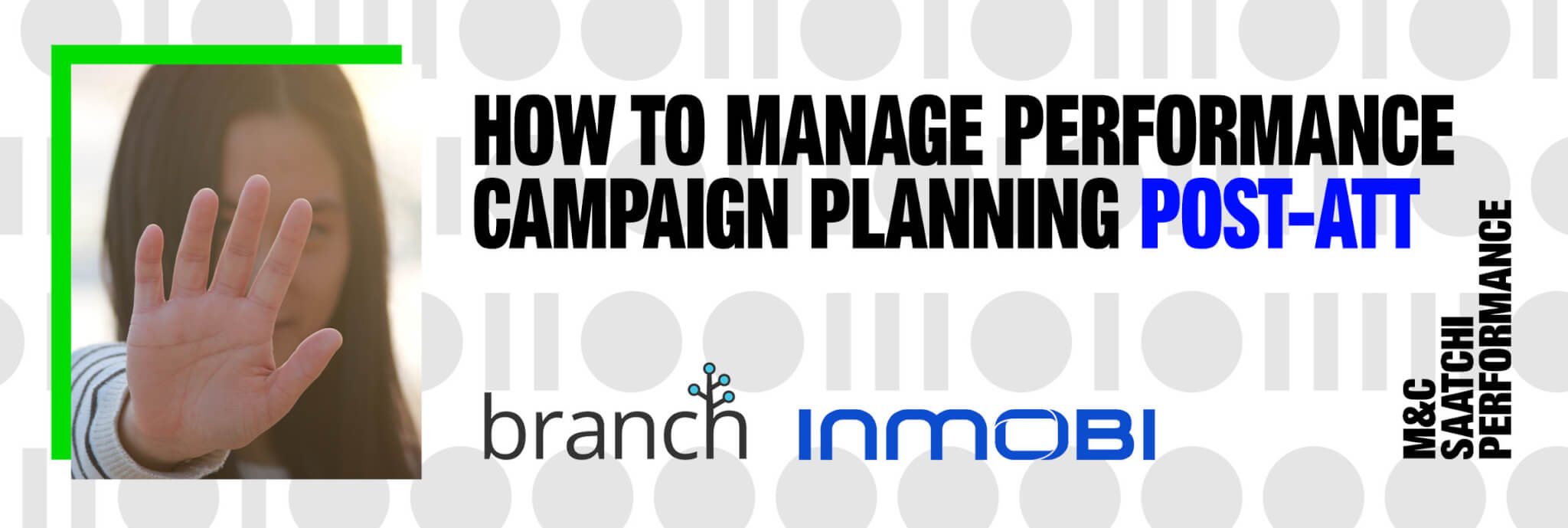Plan Like a Pro: Campaign Planning in a Post-ATT World


In 2021, Apple introduced its App Tracking Transparency (ATT) initiative, which severely limits data collection capabilities on iOS devices. This update comes on the heels of global regulations, such as GDPR, and an increase in general public frustration toward the inability to control how user activity data is collected and used. Soon, Google will roll out its own privacy initiative, further limiting mobile marketers’ ability to track attribution data.
Here’s the thing: even with these drastic shifts in privacy policy, it’s still possible to run successful mobile marketing campaigns. All it takes is understanding the data you still have access to, knowing which KPIs are still reliable, and having a willingness to adapt. Read on to discover where things currently stand and the most reliable ways to fill in the data gaps caused by these new privacy updates.
The state of post App Tracking Transparency mobile marketing
With the introduction of App Tracking Transparency, users can now opt out of data tracking on an app or device-wide basis, preventing marketers from accessing device identifiers to collect third-party data for multi-touch attribution. Some reports show as many as 80% of all iOS users have chosen to opt-out of data tracking.
Facebook has taken the most significant hit from these changes and is expected to lose around $10 billion in sales. It’s also affected many smaller advertising agencies, who don’t have access to the same volume of first-party data to make up for the difference caused by losing out on third-party data.
“These changes have pushed marketers to go back to digital marketing fundamentals,” said Dane Buchanan, Global Director of Data, Analytics & Tech at M&C Saatchi Performance. “Marketers will need to understand the context of their ad rather than just targeting specific users or user segments. ATT has changed the way a lot of people have to market on iOS.”
As of the end of October, Apple introduced SKAdNetwork 4.0 to respond to the sudden loss of third-party data. It’s not a direct replacement for third-party data. Still, it acts as a “black box” of sorts, registering views and engagements and then anonymizing them through a series of postbacks over time. With the release of the fourth iteration of SKAdNetwork, Apple has provided more first-party data to guide advertisers in testing and launching campaigns.
Android is not immune to these new privacy changes, as Google plans to roll out its Privacy Sandbox approach within the next few years. While these changes will likely not be as severe as Apple’s rollout, they will still affect what data marketers receive, so it’s essential to adjust strategies now to avoid headaches in the future.
“Don’t be caught flat-footed,” said Adrienne Rice, Director of Media Investment at M&C Saatchi Performance. “Google is giving us a very long lead time, so make sure you’re working on changes you need to make to your marketing strategies and have a plan of action going forward.”
“Google is giving us a very long lead time, so make sure you’re working on changes you need to make to your marketing strategies and have a plan of action going forward.”
Adrienne Rice, Director of Media Investment at M&C Saatchi Performance
Partner with MMPs that embrace probabilistic attribution and conversion modeling
As privacy changes make direct, deterministic attribution to specific device IDs difficult-to-impossible to achieve on iOS, marketers need to embrace probabilistic attribution and conversion modeling to make up the gaps in reporting. In fact, many mobile measurement platforms (MMPs) that rely on probabilistic attribution models have weathered these privacy changes without much issue.
Partnering with MMPs that employ robust approaches toward data science will be vital to gathering the necessary data and providing the proper context while navigating the post-privacy landscape.
“With these new privacy rules, attribution isn’t the same across iOS and Android, so data becomes more fragmented,” said Adrienne. “Data scientists are becoming more critical in stitching all that data together, especially as you add new modeling and performance evaluations, like incrementality testing and media mix modeling. You’ll need a lot more data science support to make those things work and make sure they’re as robust as possible to get the necessary analytics you need to make your campaign a success.”
Conversion modeling, in particular, will be essential for marketers to infer attribution with limited data sets. This process involves integrating machine-learning algorithms into your marketing to apply historical trends to anonymized data, thus providing a fuller understanding of where your users are coming from while reducing data gaps. MMPs will be vital in guiding marketers in creating successful conversion models.

Focus on customer acquisition, and let UX handle lifetime value
Apple’s changes to third-party attribution have severely limited the ability to measure Lifetime Value, especially when measuring LTV by channels. And while it was helpful to see where those users came from, measuring their LTV in comparison to arrival channels may have been the wrong way to look at it from the beginning.
“When someone comes into your app, it’s like passing a baton in a relay,” Dane said. “ The media has done its job, it’s gotten you into your environment or website, and now it’s up to the app to take you on a journey and keep you interested.”
Customer Acquisition Cost will be a key KPI for mobile marketers interacting with SKAdNetwork, as that’s the information Apple chooses to provide. “LTV provides a better idea of the actual revenue you’re getting from your customers, whereas CAC is essentially a snapshot of a single moment,” Adrienne said. “Since Apple’s only giving you that one snapshot, you have to use that to estimate what your LTV will be. It will be difficult to attribute LTV back to advertising.”
That’s not to say LTV is gone entirely. Marketers will still have access to first-party data and can analyze customer behavior within the app to improve the user experience to maximize LTV rates.
“Marketing will likely become more split, as advertisers will spend marketing efforts more on optimizing CAC in the first touchpoint,” said Adrienne. “Whereas the UX team will be tied more to LTV, as they optimize ways to nourish the users you already have to get them back into the app or turn them into subscribers. That approach will rely far more on in-house, organic marketing.”
The sky isn’t falling
The important thing to remember with all of these changes is that you’re still going to have access to data that you can work with, and you’ll still be able to test, iterate, and optimize your ad campaigns.
“It’s all going to be okay,” said Adrienne. “Privacy changes aren’t going to ruin the industry. Your brand isn’t going to fall apart. You’ll still have users coming in. Google, in particular, is very advertiser-friendly and is looking for collaboration and feedback. I think people are optimistic and are ready to take this challenge head-on.”
“These changes have pushed marketers to go back to digital marketing fundamentals,”
Dane Buchanan, Global Director of data, Analytics & Tech at M&C Saatchi Performance
To help advertisers adjust to a privacy-focused advertising landscape, we’ve crafted Advertising in the Privacy Era: A Guide for Mobile Marketers, an ebook that breaks down many of the challenges marketers will face with the changes App Tracking Transparency and Privacy Sandbox bring. It aims to guide marketers through this new era, giving you the tools you need to maximize performance and succeed in a post-ATT world. Sign up and download our free ebook today.

